Vintage cameras produce exclusive pictures without retouching, which is not possible with digital cameras. Indeed, a photo taken with a 35, 120 mm or a Polaroid has a more singular texture, thanks to its unique grain. After 30 hours of research, we choose the Holga 120N as the best vintage camera. It allows shots with multiple exposures.
Here is our commitment, to make sure that we provide the best user experience and content quality:
You can support us by using our links to make your purchases (at no extra cost to you)! This sometimes earns us a commission which allows us to remain independent. More about us
Our selection
"All black, the Holga 120N is a vintage medium format camera using 120mm film. The mask allows you to take 6 x 6 cm and…"
"This ready-to-use camera is a great way to introduce children to photography. With 39 exposures, it uses 35mm film and has a flash for night…"
"Nostalgic for instant photos? The Fujifilm Instax Mini 90 will delight you! This model has all the qualities of a real instant photo thanks to…"
"This camera is a faithful reproduction of the Lomography Diana, which appeared in the 60s. Using a 120 mm film, you will have the typical…"
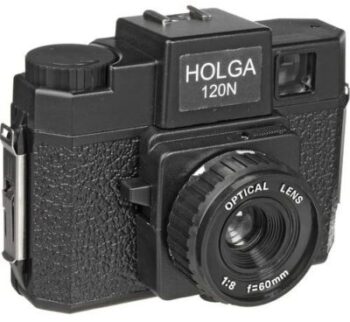
All black, the Holga 120N is a vintage medium format camera using 120mm film. The mask allows you to take 6 x 6 cm and 6 x 4.5 cm shots with a full f/11 aperture.
30,22 £ on AmazonThe Holga 120N will suit beginners as well as more experienced users. Using a 120mm film format, this vintage camera ensures authentic shots with two different sizes: 12 square exposures of 6 x 6 cm or 16 of 6 x 4.5 cm. In the photos, you will notice the presence of the typical grain of these cameras with incredible textures. The 60 mm lens has a shutter speed of 1/100 s with 2 aperture levels: sunny: f/11 and semi-shaded: f/8.
The 4 depth of field settings are perfect for shooting portraits or large group shots. Visually, the camera matches the standards of the older models. You have a black plastic frame and two attachments, on the side, to attach the included strap. Behind it, you have the film holder and the housing closing mechanism that hermetically seals the negatives.
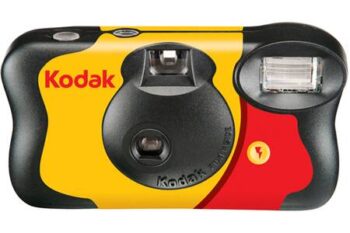
This ready-to-use camera is a great way to introduce children to photography. With 39 exposures, it uses 35mm film and has a flash for night shots.
13,59 £ on DartyAre you looking for a cheap camera for your child? Buy this disposable Kodak. It uses a roll of 35mm film already installed. Unlike DPPs, which are not allowed on elementary school field trips, your kids can use this one and take great pictures. Its use is not limited to that. Lovers of classic photos can use it on their trips to make images of unique textures.
The design is minimalist with a black plastic body sprinkled with yellow and red color typical of Kodak cameras of the time. On the top, you have the shutter button and the dial to advance the film as you go.
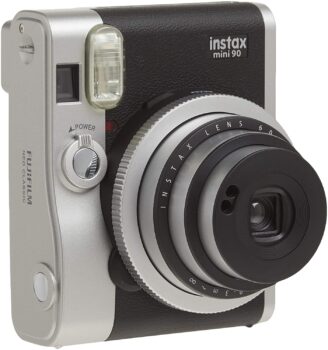
Nostalgic for instant photos? The Fujifilm Instax Mini 90 will delight you! This model has all the qualities of a real instant photo thanks to its 62 x 46 mm format and some technical improvements.
95,20 £ on AmazonThe Fujifilm Instax Mini 90 Neo Classic has a retro design that will speak to the most nostalgic. Its weight, 296 g, and compact size allow it to be stored in a bag and used at family parties or on vacation. The snapshots are beautifully made and there are 5 settings, including night, day and landscape modes.
Vintage camera, yes! It has different features like double exposure or long exposure so characteristic of analog models. The Instax mini 90 has a fixed focal length of 60 mm and a lens opening of f/12.7. With an ISO level of 800, the camera has a Bluetooth connection and a removable rechargeable battery.
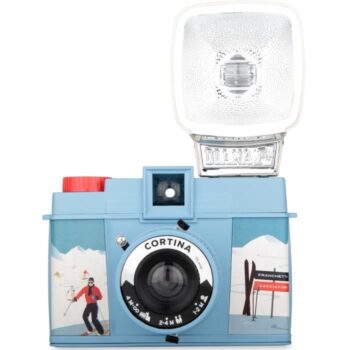
This camera is a faithful reproduction of the Lomography Diana, which appeared in the 60s. Using a 120 mm film, you will have the typical vignetting of those years on your pictures.
122 £ on CdiscountWith a design identical to the original, the Diana F+ has a vintage look thanks in part to the presence of the old fashioned flash. Using 120mm film, this camera has a 75mm focal length lens with 3 available apertures: Cloudy: f/8, Semi-shaded: f/11 and sunny: f/16. Moreover, the camera allows you to take 12 photos with a format of 5.2 x 5.2 cm, or 16 exposures of 4.2 x 4.2 cm with that typical vignetting on the edges of your shots.
You can remove the lens to make pinhole photos. Then, since the shutter and shutter release are not linked, you can experiment with multiple exposures. Finally, you can set the shutter speed to B to reproduce the long exposures of analog models.
Any specific needs?
The best vintage camera in 2021
The best entry-level vintage camera
The best high-end vintage camera
Your guide :
Rate this buying guide :By rating this buying guide, you are helping us to reward our best writers. Thank you!
| TOP OF THE TOP | CHEAP | TOP OF THE LINE | VERY GOOD | |

In accordance with our commitment, this buying guide does not contain any sponsored products. |
 9/10 |
 7/10 |
 8/10 |
 8/10 |
| OUR SELECTION |
Holga 120N
|
Kodak FunSaver - Appareil photo jetable
|
Fujifilm Instax Mini 90
|
Lomography Diana F+ 120 mm
|
|
All black, the Holga 120N is a vintage medium format camera using 120mm film. The mask allows you to take 6 x 6 cm and 6 x 4.5 cm shots with a full f/11 aperture.
|
This ready-to-use camera is a great way to introduce children to photography. With 39 exposures, it uses 35mm film and has a flash for night shots.
|
Nostalgic for instant photos? The Fujifilm Instax Mini 90 will delight you! This model has all the qualities of a real instant photo thanks to its 62 x 46 mm format and some technical improvements.
|
This camera is a faithful reproduction of the Lomography Diana, which appeared in the 60s. Using a 120 mm film, you will have the typical vignetting of those years on your pictures.
|
|
|
Design
|
|
|
|
|
|
Dimensions
|
2.5 x 2.5 x 2.5 cm
|
6.3 x 2.5 x 1.5 cm
|
11.3 x 9.2 x 5.7 cm
|
8.9 x 8.3 x 12.7 cm
|
|
Film size
|
120 mm
|
35 mm
|
Paper film - 8.6 x 5.4 cm
|
120 mm
|
|
Photo size
|
6 x 6 cm / 6 x 4.5 cm
|
10 x 15 cm
|
6.2 x 4.6 cm
|
5.2 x 5.2 cm / 4.2 x 4.2 cm
|
|
Number of exposures
|
42705
|
39
|
10
|
42705
|
Help us improve this table:
Report an error, request the addition of a feature to the table, or suggest another product. Thank you for your kindness!
We spend thousands of hours each year studying the major specialized websites, analyzing products of hundreds of brands and reading user feedback to advise you on the best products.
We are a product review company with a single mission: to simplify your buying decisions. Our research and testing helps millions of people every year find the best products for their personal needs and budget.
To support us you can: use our links to make your purchases (which often earns us a small commission), share our articles on social networks, or recommend our site on your blog. Thanks in advance for your support!
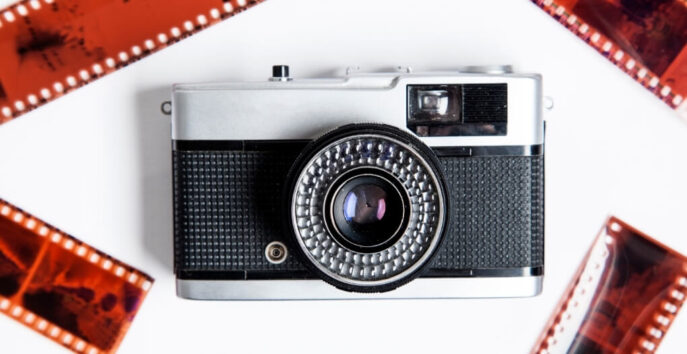
The choice of a vintage camera depends largely on your level of photography and the intended use. For those who want to introduce their children to photography, you can get disposable Kodak, Fujifilm or Ilford cameras, just like in the good old days. They are easy to use and have a flash for indoor shots. They are sold with built-in 35mm film with a fixed ISO level; varying between 400 and 800. They are also suitable for the initiated who want to travel light.
Those looking for a better experience will have to turn to basic models like the Olympus MJU 1, the Pentax K1000 or the Holga 120N from Lomography. You will enjoy inserting the film roll and buying different films with different ISO. On the other hand, if you have a high level of experience in photography, vintage SLR cameras, such as the Nikon F, should suit you.
Contrary to digital models, vintage cameras have a few specifics. You should choose your vintage camera based on the type of photography you want to do. If you plan to buy a camera to take wide-angle panoramic images, you should choose a model with an F / 16 or F / 22 aperture. The portrait format is best achieved when using a camera with an aperture size that has the following value: F/2.8 and smaller. Since these cameras do not have a digital mechanism, it is important to know the subtleties so as not to make the wrong choice.
When we talk about vintage cameras, we have two categories. Those with a fixed lens and others more professional with a set of lenses. So it is important to choose the right camera that will suit your needs. For those who are new to vintage cameras, a fixed lens is recommended. This is perfect for taking everyday photos in almost any situation. However, if you're looking to spice up your photos it's recommended that you choose models with interchangeable lenses.
This
is an important criterion, as it's difficult to find certain types of film. The most commercialized type of film that is easily found is the 35 mm roll. It reproduces photos in the 24 x 36 mm format that is the current standard for digital models. For beginners, film comes in the form of a metal roll that contains the negatives. It has a capacity of 24 or 36 exposures. The second issue with film is the cost of developing the images. A 120 mm film will be more expensive to develop than a 35 mm film with a lower number of exposures: 16 exposures.
Unlike digital cameras where everything is done automatically, the film plays an important role in a vintage camera. First of all, you have to choose the right size of film and then you have to know that a roll has a precise exposure level.
The higher the ISO exposure value, 2500 ISO for example, the more sensitive your final image will be to light. This is a setting that allows you to take pictures with low ambient light intensity.
The issue is the level and quality of grain produced by these old-fashioned cameras, which can alter the final image.
When using a vintage camera, you must take precautions. First of all, the optical lens is very fragile, it is recommended not to place the camera in the open air. Always remove the lens cover at the last moment and put your camera back in its case after use. Without precaution, it can happen that your photos have a white spot once developed. This is due to dust particles inside the lens.
To clean your camera safely, it is important to have the right equipment: a brush, hand blower, cotton swab, lens cleaner and a microfiber cloth. For the external surface, wipe the cloth with a moistened, isopropyl alcohol, to clean any traces of dust. However, it is forbidden to wipe the lens and the inside of the camera.
For the optical part and the interior, clean with the manual blower. Be careful, never point the blower directly at the shutter blades or curtain. To clean the mirror, take a cotton swab soaked in cleaning fluid and gently clean the surface. Never clean the frosted surface! If you are unsure of your actions, it is best to call in an expert.
There are 3 main families of vintage cameras. The difference will be mainly in the type of film and the level of exposure.

Sold in packs a few years ago, this is the most popular type of vintage camera. Easy to use, it is perfect for beginners and for those who want to continue their love affair with the past. The compact models were the most popular followed by the SLR models. That's right! The 35mm SLR models work pretty much like their digital cousins. For those accustomed to digital equipment, this is a perfect bridge to transition between the two technologies.
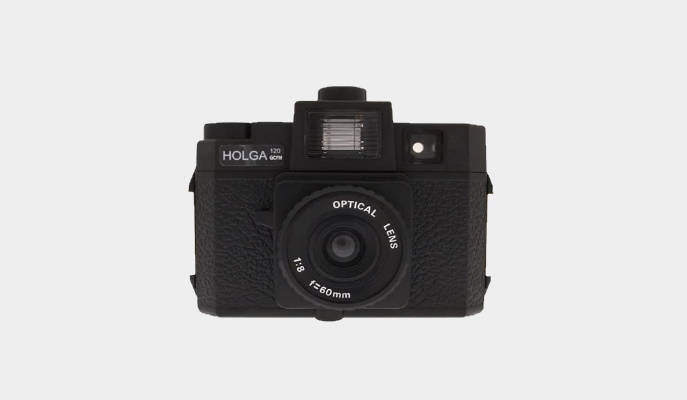
Medium format models use 120mm film with negatives that have a larger surface area than 35mm. It has higher image quality and allows for high quality brokeh effects at close range. It is a camera more dedicated to advanced users, because its use requires some adjustments. Like the 35mm models, they can be categorized into 3 types: SLR, rangefinder and bi-lens.
Let's take a look at the so-called bi-lens models. They were the pride of the times between the 19th and the beginning of the 20th century. They have a particular rectangle shape with two lenses in front. Its particularity is that it has an original point of view, at the level of the chest.
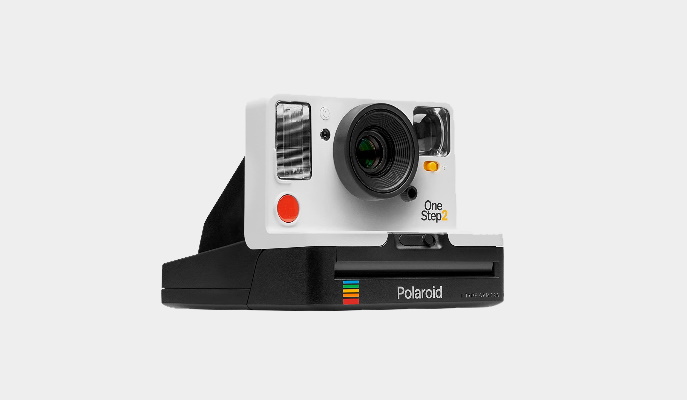
Instant cameras have made the glory of the Polaroid brand. This is the home of vintage photography! The camera is a bit larger than these companions, but it instantly develops your shots on photo paper. You no longer have to wait for your negatives to be developed. The current new models use the same process, but with a touch of innovation.
Autofocus means automatic focusing. This technology is also found in the latest digital models. It is a mechanism that allows the camera to automatically adjust the quality of a picture, sharpness, in relation to the distance of the subject. The automatic mode supports two autofocus modes: point and continuous. No adjustments are required, the camera takes care of everything. Just point the lens at the subject.
This is the expert mode and that's the whole point of vintage cameras. Here you have full control over the focus of the shot. You can adjust the contrast level, focal length or exposure time for example. This allows you to take better pictures than with the autofocus mode, but it requires some photographic knowledge.
If you are a professional or have a strong photographic background, it is best to get a vintage camera with both modes. On the other hand, if you are a beginner, choose models with autofocus only. It is important to know that the price of these cameras is not cheap, especially for the more advanced ones.
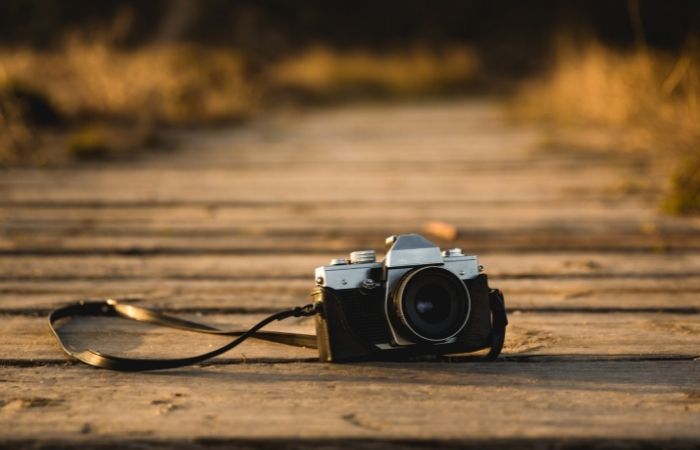
For its authenticity
Compared to a digital camera, a vintage camera allows you to take exclusive photos without retouching. With it, you get pictures with shimmering colors. If you get your photos right, you can be sure of authentic image quality.
For its ease of use
Contrary to what many people think, using a vintage camera is not a major problem. Indeed, you just have to aim, adjust and then capture the image of your choice. A real child's play for anyone! Therefore, this kind of camera is suitable for amateurs as well as for the more experienced.
For its great resistance
Vintage cameras offer more resistance than digital models. Indeed, they integrate very few electronics, which makes them quite resistant to shocks. If you want to take pictures in rough terrain, this is the ideal companion. There are even models that are resistant to humidity.
Its photos may still surprise you
With a vintage camera, there's always an element of surprise when viewing your various shots. When using a digital camera, you can see the result right away and therefore you don't feel the same excitement as with an "old fashioned" model.
For the experience it provides
When using a vintage camera, you are the main guarantor of the quality of your shots. You mustn't neglect anything, whether it's in terms of lighting or angle of view. A great experience! With a digital camera, the person taking the pictures only has to press and rely on the automatic settings. If you are an artist, a vintage camera has everything to awaken your instinct. Some film cameras are still very popular today despite the evolution of technology.
In our opinion, the best brands of vintage cameras in 2022 are :
With the slogan "you press the button, we do the rest", George Eastman put the first simple camera in the hands of ordinary people in 1888. In doing so, he made a cumbersome and complicated process easy to use and accessible to everyone, not just professionals. The brand is one of the oldest in photography and its products are reliable and of the highest quality.
Fujifilm is a pioneering Japanese brand in camera production. Founded in 1934, Fujifilm has leveraged its imaging and information technologies to become a global presence known for innovation in healthcare, graphic arts, optical devices, highly functional materials and other high-tech fields. Its vintage cameras are still among the most popular in the world today.
This Austrian company was founded in 1992 and is entirely dedicated to analog, experimental and creative photography. The Company's business segment includes the retail sale of cameras, film and other photographic supplies and equipment.
If you're looking for a low-cost, but good quality camera, a Holga will suit you perfectly. The Holga is a medium format 120 camera, made in Hong Kong, known for its low fidelity aesthetic. The Holga's low-cost construction and single meniscus lens often produce images that display vignetting, blurring, light leakage and other distortions. The camera's limitations have earned it a cult following among some photographers, and Holga photos have won awards and competitions in both art and news photography.
Canon is a Japanese multinational company based in Ōta, Tokyo. It is a famous brand that has a very wide range of products, but it mainly built its reputation in the design and production then marketing of cameras. It then perpetuated this reputation with its printers, scanners, etc.
The diagram below will help you to get an idea of the typical prices for each price range (entry-level, mid-range and high-end).
However, more expensive does not necessarily mean better.
We therefore advise you to always consult our ranking before deciding, rather than blindly relying on price ranges.
Installing your film
The first time, it is a little confusing. In order to properly insert your roll of film, 35 or 120 mm, you need to gently pull the tab. Then insert the roll and attach the other end to the sprocket. Look to see if the holes on the film are secure: if not, you won't take any pictures. If you pull the tab too much, you may expose too much film to light and ruin some of your poses.
Don't forget the lens cap
When
you're used to digital cameras, you may reflexively press the shutter button. Oops! You should always have the reflex to remove the lens cap on an old-fashioned camera.
Do not use the flash in the sun
When
taking a picture in daylight on vintage cameras, turn off the flash on your equipment. You will overexpose the negative and lose your photo. On the other hand, once night falls the use of the flash is beneficial.
No more shaking the photo paper
If
you have opted for Polaroid Originals cameras, don't have the bad habit of shaking the photo papers once printed
.
Take two pictures
The
framing depends on your level as a photographer. That's why it's recommended to take two or three pictures of the same scene. This will allow you to choose the best photo once developed.
The best vintage camera depends on your needs and budget. Read our buying guide to find out which products are the best at the moment.
We call vintage cameras the models that appeared before the digital era. Your parents probably had one in their basement. They have a metallic or black plastic frame, require batteries and a roll of film, 35 or 120 mm.
You need the right batteries and the right size of film. Once you have these two things, all you need to do is install them. To find out how, please read our full guide on the subject.
The compact 35mm models are perfect for those who want to cross the vintage bridge and get back to the feeling of real photography.
It depends on your needs. A compact vintage camera costs an average of 20 euros on online platforms like Amazon. Other more complex models can cost more than 1,000 euros.
Every month we help more than 1 000 000 people buy better and smarter.
Copyright © 2022 - Made with ♥ by buyingbetter.co.uk
Your reviews and buying guides 0% advertising, 100% independent!